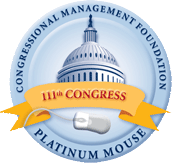Madame Speaker, today I am pleased to introduce a bill to authorize the seven National Environmental Research Parks (NERPs) at Department of Energy (DOE) sites, including the Los Alamos Environmental Research Park in my district. These parks are unique outdoor laboratories that offer secure settings for long-term research on a broad range of subjects including, wildlife biology, ecology, climate change effects, environmental remediation, and maintenance of freshwater ecosystems. The parks also provide rich environments for training future researchers and introducing the public to environmental sciences. They are located within six major ecological regions of the United States which cover more than half of the nation.
In the mid-1970s, DOE developed a policy for current and future research parks. The mission of the parks is to: conduct research and education activities to assess and document environmental effects associated with energy and weapons use; explore methods for eliminating or minimizing adverse effects of energy development and nuclear materials on the environment; train people in ecological and environmental sciences; and educate the public. The Parks maintain several long-term data sets that are available nowhere else in the U.S. or in the world on amphibian populations, bird populations, and soil moisture and plant water stress. These data are uniquely valuable for understanding wildlife biology, ecology, and for the detection of long-term shifts in climate.
The federal government’s interest in and need for ecological research evolved after World War II as we sought security and safety by producing nuclear weapons in isolated regions surrounded by large buffer zones of undeveloped land. DOE's predecessor, the Atomic Energy Commission (AEC), recognized a need to track both radioactive fallout from the testing of nuclear weapons and inadvertent radioactive releases from nuclear weapons production facilities into the environment. Out of the radionuclide research grew new technologies for quantifying the movement of natural materials such as nutrients and fluids and of introduced pollutants through the ecosystem. The maintenance of the Parks by DOE conforms with statutory obligations to promote sound environmental stewardship of federal lands and to safeguard sites containing cultural and archeological resources.
In 1972 AEC established the first NERP at the Savannah River Site in South Carolina. The plan for a research park emerged during a formal review of the environmental research activities at Savannah River. The review team consisted of scientists, representatives from other Federal agencies, and members of the newly formed President's Council on Environmental Quality.
The Los Alamos NERP was designated at in 1973. Its 40 square miles include the entire site of Los Alamos National Laboratory and a landscape of canyons, mesas, mountains, and the Rio Grande providing a diverse range of ecosystems to explore. The Park’s ongoing environmental studies include: interaction between its local ecosystems and the hydrologic cycle; contaminant transport; elk, deer, and raptor population dynamics; landfill cap performance; woodland productivity; and long-term data sets developed to monitor climate change effects, soil moisture, and fire ecology providing valuable baseline reference information. Over 125 publications related to the ecology and interaction between lab operations and the environment have been written about Los Alamos and the Pajarito Plateau it rests on.
The National Environmental Research Parks have been conducting critical activities for our nation and the world’s environmental research portfolio for decades. They are one of our nation’s most valuable environmental research assets, and it is time for them to be recognized in law and explicitly provided the resources they need to continue their valuable work. This legislation offers guidance for the Parks’ research and monitoring programs as well as their education and outreach activities, and it authorizes a small amount of core funding needed to support their important work. I look forward to working with my colleagues in both parties and both Chambers of Congress to bring this bill to the President’s desk as soon as possible.
